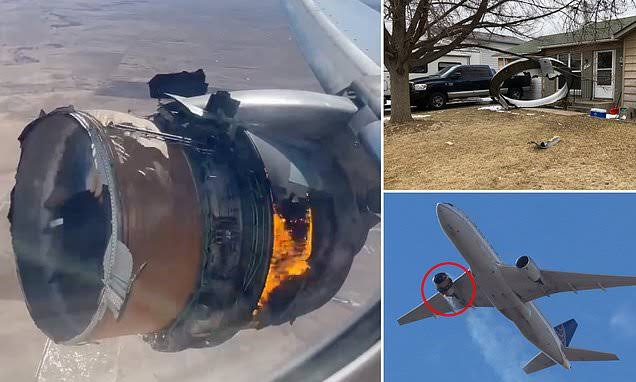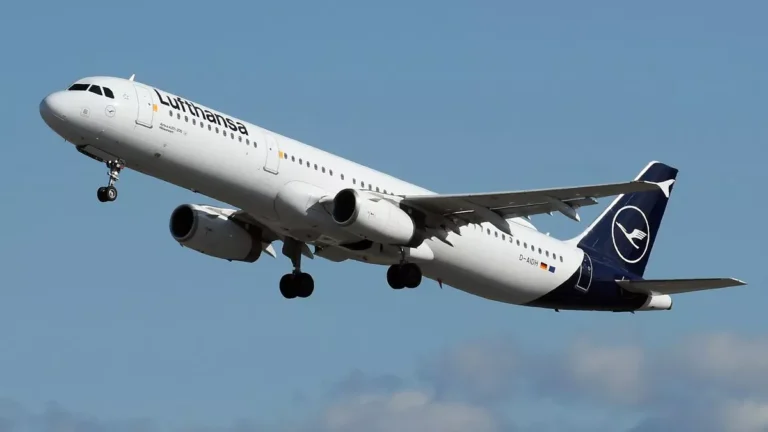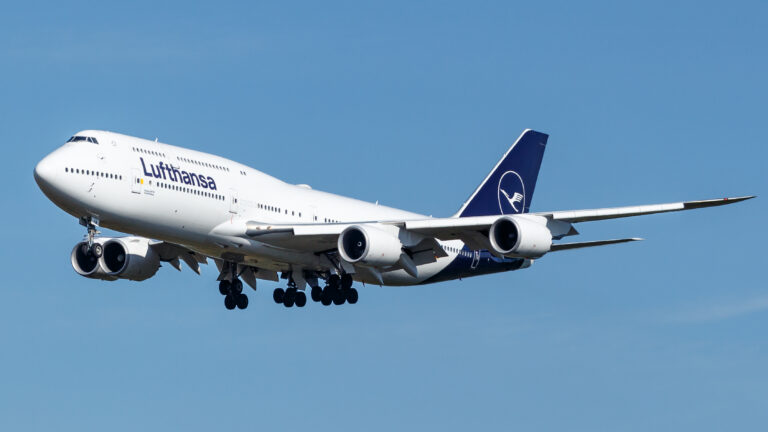Panic in the Sky: United Airlines Flight 328 Suffers Mid-Air Engine Fire Over Colorado”
Panic in the Sky: United Airlines Flight 328 Suffers Mid-Air Engine Fire Over Colorado
In what became one of the most alarming aviation incidents in recent memory, United Airlines Flight 328 turned into a near-disaster on February 20, 2021, when a dramatic mid-air engine failure forced the aircraft to make an emergency landing back in Denver, Colorado. The Boeing 777-222 aircraft, en route to Honolulu, Hawaii, was carrying 229 passengers and 10 crew members. While no one onboard was injured, the sheer magnitude of the engine failure—complete with fire, massive noise, and falling debris—caused sheer panic both in the sky and on the ground.
The Routine Departure That Turned Into Chaos
Flight 328 took off from Denver International Airport (DEN) at around 1:04 PM local time. The plane, a 26-year-old Boeing 777 powered by two Pratt & Whitney PW4077 engines, had just started its climb toward cruising altitude. About four minutes after takeoff, while climbing through approximately 12,500 feet, the right engine suffered a catastrophic failure.
Passengers described hearing a loud explosion followed by violent shaking and a flash of fire on the right side of the aircraft. The engine had essentially blown apart, with large metal fragments tearing through its casing. The cowling detached and plummeted to the ground, falling into a residential area in Broomfield, Colorado—a suburb of Denver.
Scenes of Terror Inside the Aircraft
Many passengers quickly became aware that something was terribly wrong. Cell phone videos and images shared on social media showed the engine visibly on fire, with parts of its casing missing and internal components exposed and rattling. The cabin shook violently as the pilots worked quickly to stabilize the aircraft.
“It was the loudest boom I’ve ever heard,” one passenger said in a media interview. “I looked out the window and saw the engine basically in flames. I thought, ‘This is it.’”
Despite the terrifying visuals and unsettling turbulence, flight attendants moved swiftly to reassure passengers. Some passengers began texting loved ones, fearing the worst.
Calm in the Cockpit: Heroic Piloting
In the cockpit, Captain Bob Gross and First Officer David Cronin remained calm under immense pressure. Trained for such emergencies, the flight crew immediately declared an emergency and requested to return to Denver. The pilots expertly guided the aircraft back for a safe landing despite flying on a single engine and navigating potential imbalance issues caused by the damage.
Air traffic control coordinated the emergency return with exceptional efficiency. About 20 minutes after the engine failure, Flight 328 touched down safely at Denver International Airport. The cabin erupted in applause as the plane came to a stop, and emergency personnel quickly surrounded the aircraft to ensure safety and inspect the damage.
A City Shocked: Debris Scattered Over Neighborhoods
While those on board escaped harm, residents of Broomfield, Colorado were left stunned when large chunks of the engine rained down from the sky. A circular engine inlet ring landed in a front yard, narrowly missing a home. Other debris—ranging from fan blades to insulation and metal fragments—was found scattered over a mile-wide area.
Miraculously, no injuries were reported on the ground. Broomfield Police and fire departments cordoned off affected areas and warned residents to avoid touching or moving any of the debris. The Federal Aviation Administration (FAA) and National Transportation Safety Board (NTSB) quickly arrived on the scene to begin their investigation.
Investigating the Cause
The NTSB launched an immediate inquiry into the incident, focusing on the failed right engine. Early findings pointed to metal fatigue in one of the fan blades—a defect that caused the blade to crack and break off mid-flight. This detached blade struck other components, leading to the disintegration of the engine and the ensuing fire.
What made this incident particularly alarming was that it wasn’t the first time a similar failure occurred. A nearly identical engine failure had happened on United Airlines Flight 1175 in 2018, also involving a Boeing 777 with Pratt & Whitney PW4000 engines. In that case, the aircraft landed safely in Honolulu, and no one was injured.
Following the Flight 328 incident, both the FAA and international aviation authorities temporarily grounded all Boeing 777 aircraft equipped with PW4000 engines. Inspections were ordered to check for metal fatigue and other structural weaknesses.
Boeing and United’s Response
Boeing issued a statement supporting the grounding and pledged to cooperate fully with regulators. The company also committed to working closely with Pratt & Whitney and the airlines to ensure thorough inspections of affected engines.
United Airlines, for its part, acted swiftly by voluntarily grounding its fleet of Boeing 777s with PW4000 engines even before the FAA mandate. The airline rerouted passengers, arranged refunds, and emphasized its commitment to safety.
“Safety is our highest priority,” United said in a statement. “We are working closely with federal agencies to understand what happened and to ensure it never happens again.”
Aviation Experts Weigh In
Aviation experts praised the crew of Flight 328 for their professionalism, noting that the outcome could have been much worse. Engine failures, though rare, are part of standard emergency training for commercial pilots. Still, handling such a failure during a fully loaded takeoff phase presents a high-risk scenario.
“This was a textbook example of how a well-trained crew can turn a potential disaster into a safe landing,” said John Nance, a veteran aviation analyst. “But the similarity to the 2018 incident should serve as a red flag to regulators.”
The incident also sparked renewed scrutiny of aging aircraft and maintenance standards, especially in the wake of reduced operations during the COVID-19 pandemic, which may have impacted aircraft upkeep.
Public Reactions and Passenger Support
The footage of the engine fire quickly went viral, drawing global media attention. Many lauded the pilots and flight crew for their heroic handling of the crisis. Passengers took to social media to share their gratitude, recounting the calm atmosphere maintained by the crew despite the severity of the situation.
In the days following the incident, United Airlines reached out to all passengers, offering counseling services, compensation, and assistance with rescheduling travel. Some passengers expressed lingering trauma, reporting difficulty flying again or experiencing recurring anxiety.
Regulatory Impact and Industry Changes
In response to the incident, the FAA issued emergency airworthiness directives mandating more rigorous inspections of Pratt & Whitney PW4000 engines. These included thermal acoustic imaging tests to detect blade cracks that were previously difficult to identify using standard inspection techniques.
Pratt & Whitney, under pressure, accelerated its review and maintenance schedule for the affected engines. Airlines around the world had to adjust schedules and ground aircraft temporarily, causing minor disruptions but earning praise for prioritizing safety.
The event also reignited discussions about the lifespan of commercial aircraft components and the importance of non-destructive testing technologies. Lawmakers and transportation committees pushed for more funding toward aviation safety research and modern inspection tools.
The Legacy of Flight 328
In hindsight, United Airlines Flight 328 stands as a moment that highlighted the critical importance of preparedness, professionalism, and innovation in the aviation industry. While the images of a flaming engine and scattered debris remain etched in public memory, so too does the remarkable fact that all 239 people onboard walked away unharmed.
The incident served as a wake-up call for the entire aviation ecosystem—from regulators and manufacturers to airlines and maintenance crews. It reaffirmed that while aviation remains one of the safest modes of transportation, complacency is never an option.
For the passengers aboard that flight, it was a terrifying ordeal turned miracle. For the broader industry, it was a moment to learn, adapt, and continue striving for even higher safety standards.






